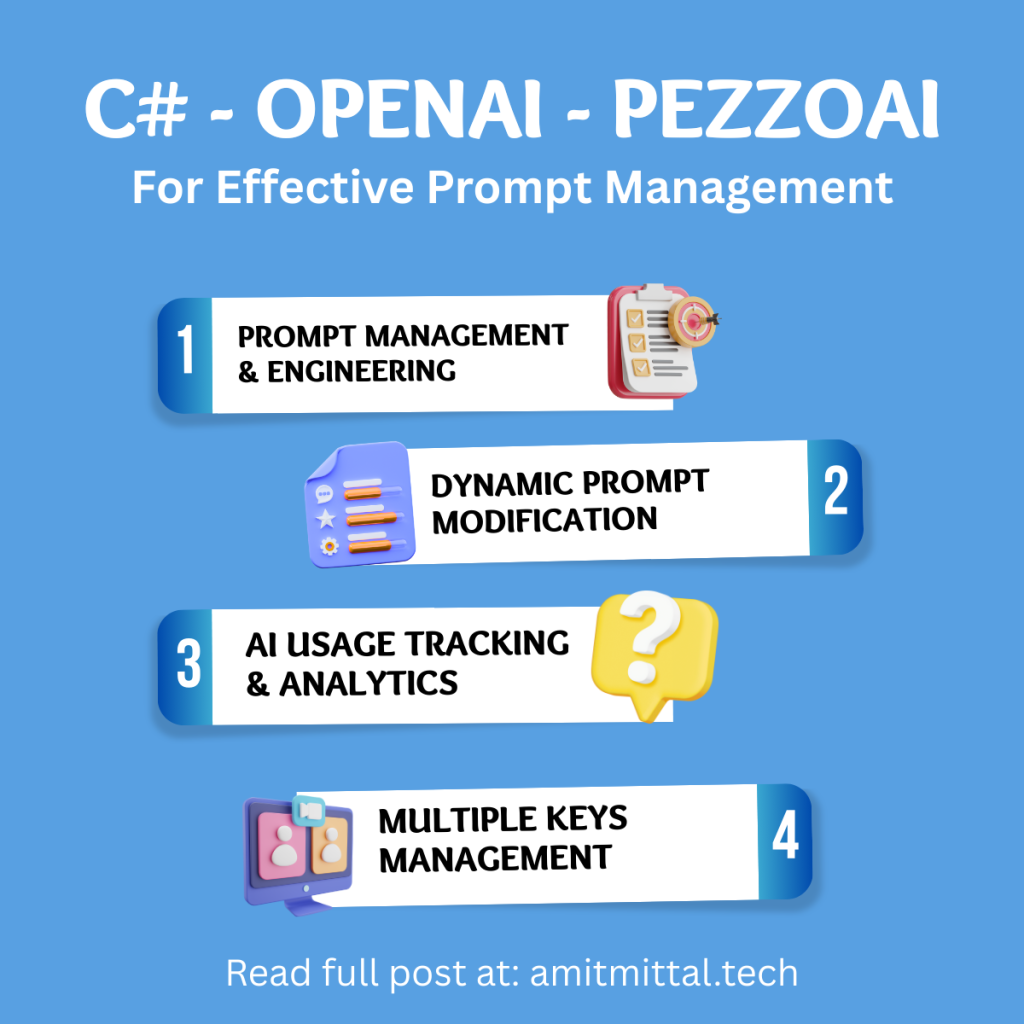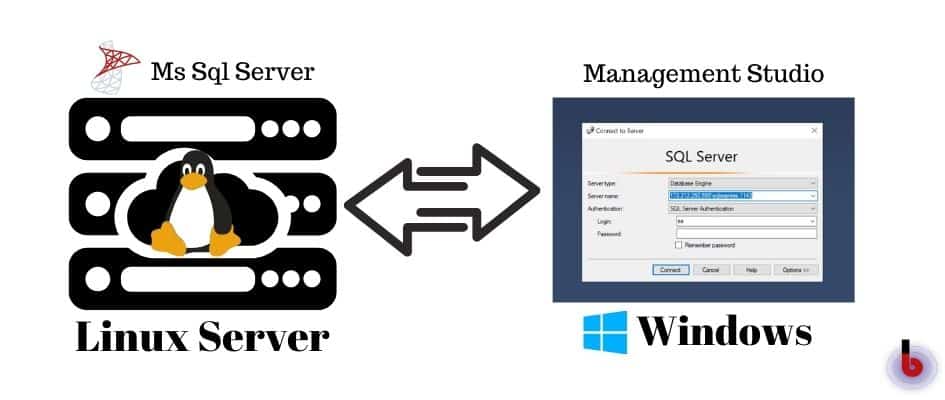Microservices have become a buzzword in the software development world, but they often come with the reputation of being expensive and overly complex. Many startups and small businesses shy away from them, fearing high hosting costs, operational overhead, and the need for a large, specialized team. However, with the right approach, microservices can be as cost-effective as monolithic architectures, offering greater flexibility, scalability, and resilience.
Why Microservices Get a Bad Rap (and Why It’s Not Always True)
Microservices are often seen as the go-to architecture for large, enterprise-scale applications. This reputation comes with a few common misconceptions:
- Expensive Infrastructure: People assume that microservices require massive infrastructure and complex orchestration tools like Kubernetes.
- Operational Complexity: The need for robust monitoring, logging, and service discovery is seen as a barrier for smaller teams.
- High Development Costs: The perception that microservices demand highly specialized teams with deep expertise in distributed systems.
But it doesn’t have to be this way. With careful planning and smart design, you can enjoy the benefits of microservices without breaking the bank.
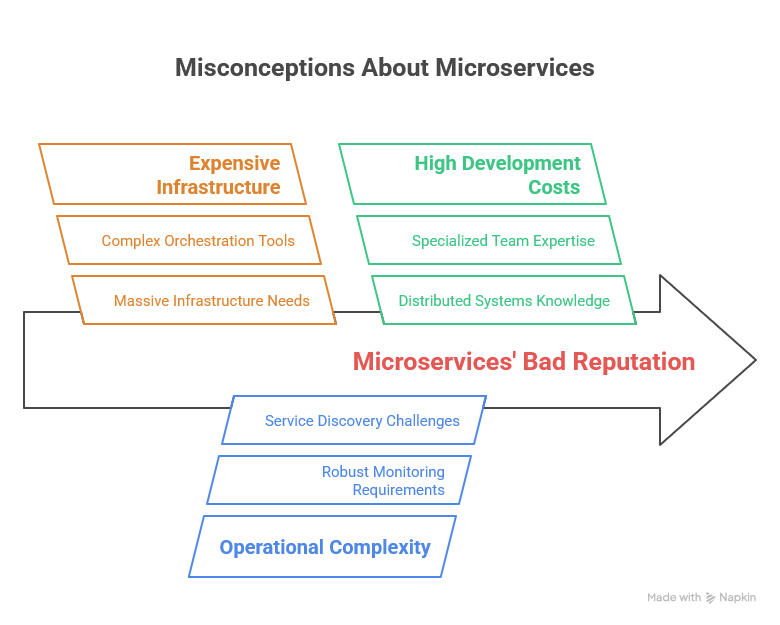
Smart Design, Smarter Savings
Microservices, when designed thoughtfully, can actually reduce costs in the long run. Here’s how:
- Right-Size Your Services: Avoid over-decomposition. Group tightly-coupled services together to reduce orchestration overhead and simplify maintenance.
- Leverage Efficient Communication: Use gRPC or message brokers instead of chatty REST APIs for internal communication to save on data transfer costs.
- Centralized Logging and Monitoring: Opt for open-source tools like Prometheus, Loki, and Grafana to avoid high SaaS fees.
- Smart Hosting Choices: Use lightweight container orchestrators like K3s or even Docker Swarm for smaller projects, rather than jumping straight into costly Kubernetes setups.
- Consolidate Small Services: Don’t create a service just for the sake of it. Consolidate small, related services to avoid the overhead of managing too many endpoints.

Real-World Examples
Many successful startups have proven that microservices can be both cost-effective and scalable when approached correctly. Companies like Netflix, Uber, and Airbnb started with monoliths before gradually transitioning to microservices as their user bases grew.
Even smaller companies can benefit. For instance, startups that use multi-tenant databases or leverage spot instances and auto-scaling can significantly reduce hosting costs while maintaining flexibility.
A real-life example is Freekey.ai, a SaaS platform for managing question banks, which uses microservices architecture combined with domain-driven design. This approach allowed the team to scale critical components independently while keeping monthly hosting costs under $500. By carefully designing the services to align with the domain, they reduced orchestration complexity and avoided the pitfalls of over-decomposition, making the overall system both cost-efficient and scalable.
Breaking the Myths
Let’s address some of the common misconceptions:
- Myth: Microservices are only for large companies.
- Reality: Small teams can benefit if they focus on critical, independent components and use efficient service discovery and communication patterns.
- Myth: Microservices always lead to higher costs.
- Reality: With proper cost management, microservices can actually reduce long-term costs through optimized resource allocation.
- Myth: They are too complex for startups.
- Reality: With the right DevOps culture and tools, microservices can be manageable even for small teams.
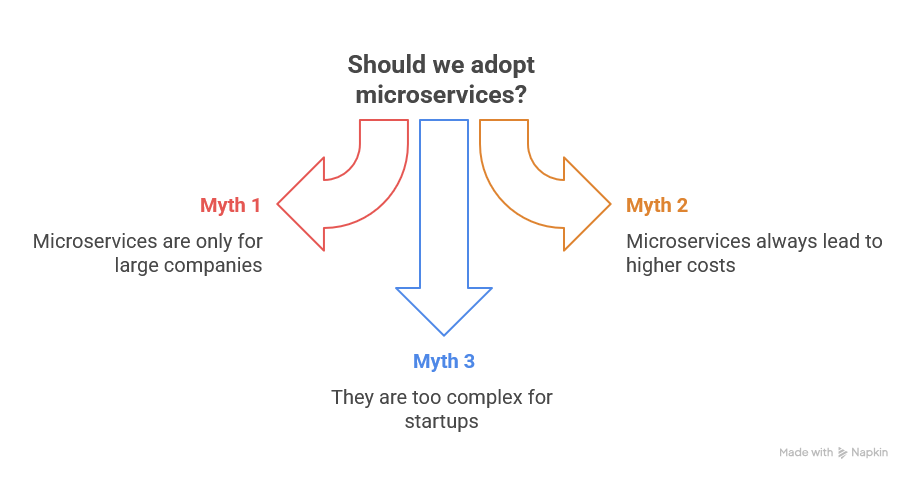
Why NOT Having Microservices Could Be a Bad Idea
While monolithic architectures are simpler to start with, not having microservices can lead to several long-term challenges:
- Scalability Bottlenecks: Scaling a monolith means scaling the entire application, even if only one part needs it.
- Single Point of Failure: A bug in one part of a monolithic application can bring down the entire system.
- Slower Development Cycles: Large codebases can slow down development, testing, and deployment times.
- Technology Lock-In: Monoliths often make it difficult to adopt new technologies without significant refactoring.
- Difficult to Scale Teams: Adding more developers to a tightly coupled codebase often leads to more conflicts and slower progress.
- Higher Maintenance Costs: Monolithic architectures can become harder to maintain as they grow in complexity.
- Lack of Flexibility: It can be challenging to experiment with new features or services without risking the stability of the entire system.
10 Do’s and Don’ts for Optimizing Microservices Costs
✅ Do’s
- Start with a modular monolith before breaking into microservices.
- Right-size your services to avoid over-decomposition.
- Use gRPC or message brokers for efficient communication.
- Prefer DNS-based service discovery over costly managed options.
- Leverage spot instances and auto-scaling for burst workloads.
- Centralize logging with open-source tools like Prometheus and Loki.
- Group tightly-coupled small services to reduce overhead.
- Use multi-tenant databases where appropriate.
- Implement in-memory caching to reduce database load.
- Automate cost monitoring and optimization.
❌ Don’ts
- Don’t over-engineer before validating product-market fit.
- Don’t ignore data transfer costs across services.
- Don’t rely exclusively on costly managed services.
- Don’t neglect security while trying to save costs.
- Don’t oversize your containers – right-size for efficiency.
- Don’t overuse managed load balancers for internal traffic.
- Don’t overlook the cost of scaling stateful services.
- Don’t assume serverless is always cheaper at scale.
- Don’t ignore the impact of complex microservices on developer productivity.
- Don’t forget to account for licensing costs.
Questionnaire for CTOs – Is Microservices the Right Choice?
- Does your project have independent components that can evolve separately?
- Are you building for scale or expecting rapid growth?
- Do you have the DevOps maturity to manage a distributed system?
- Can you handle the overhead of service discovery, monitoring, and logging?
- Will your services need to scale independently?
- Are you prepared for the complexity of data consistency and eventual consistency?
- Do you have the budget for the initial infrastructure setup?
- Are your developers comfortable with distributed systems and asynchronous communication?
- Do you have a clear separation of concerns across your application?
- Is rapid deployment and independent scaling a priority?
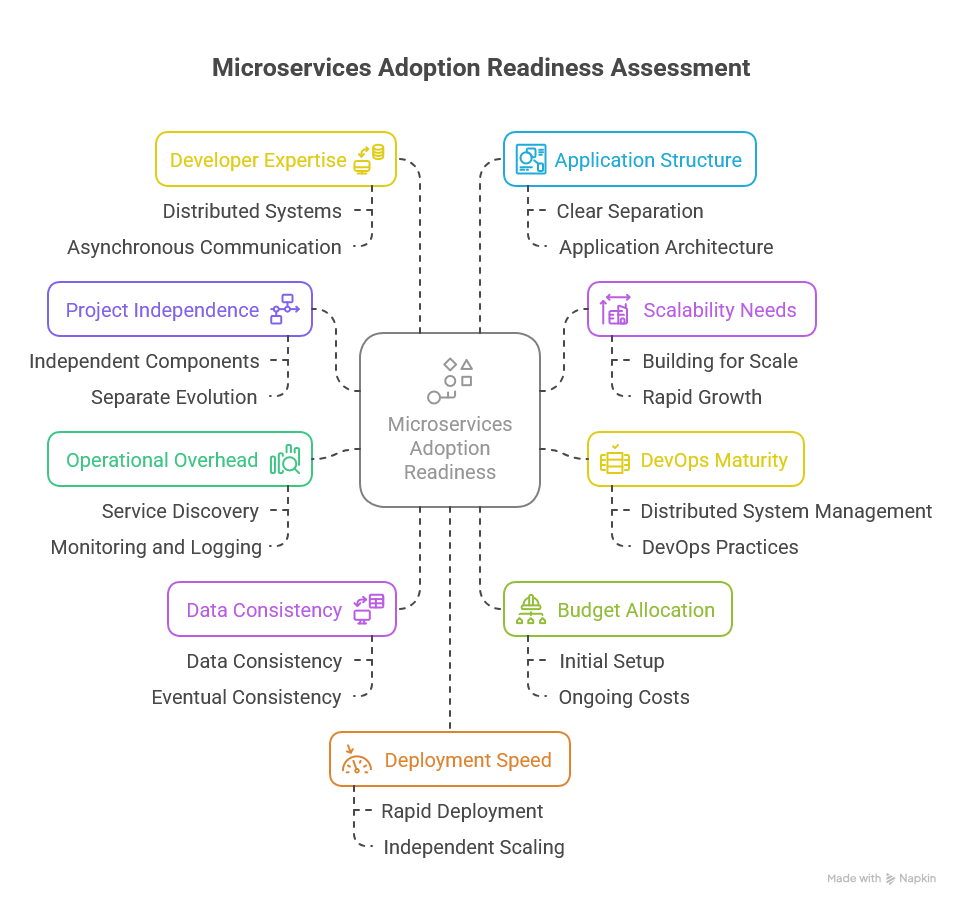
Conclusion – Why Microservices “Sahi Hai” for Your Startup
Microservices aren’t just for tech giants. With thoughtful design, efficient communication, and smart hosting choices, you can enjoy the benefits of scalability, flexibility, and resilience without breaking the bank. Whether you’re building the next big SaaS platform or a niche application, microservices might just be the right choice – sahi hai.
Ready to take the plunge? Choose wisely, design thoughtfully, and remember – microservices sahi h.
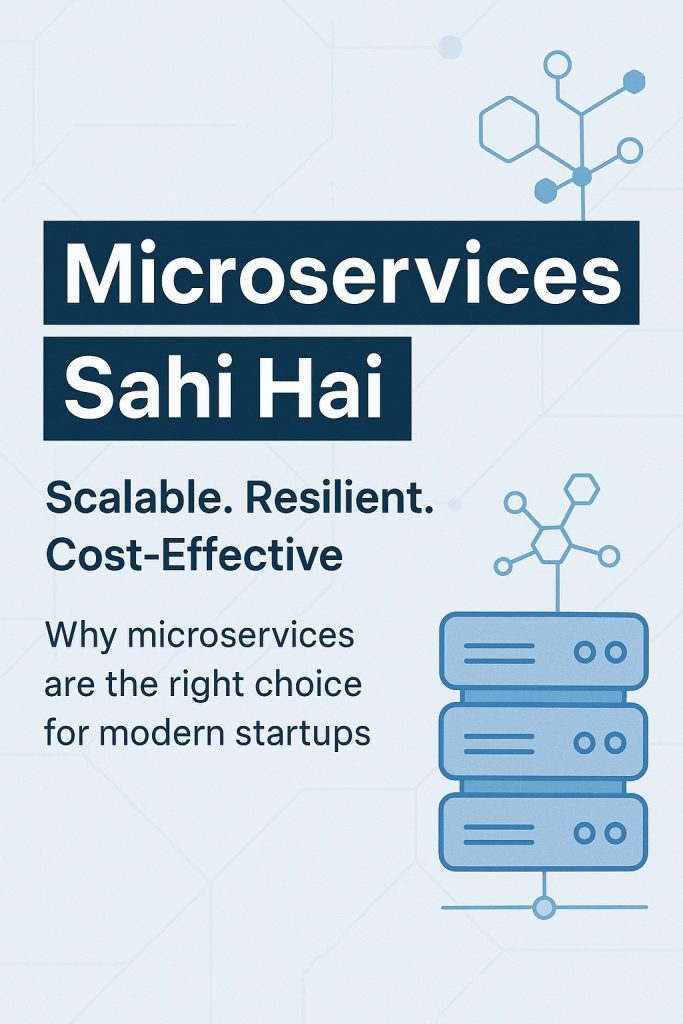

Amit Mittal is a seasoned tech entrepreneur and software developer specializing in SaaS, web hosting, and cloud solutions. As the founder of Bitss Techniques, he brings over 15 years of experience in delivering robust digital solutions, including CMS development, custom plugins, and enterprise-grade services for the education and e-commerce sectors.
